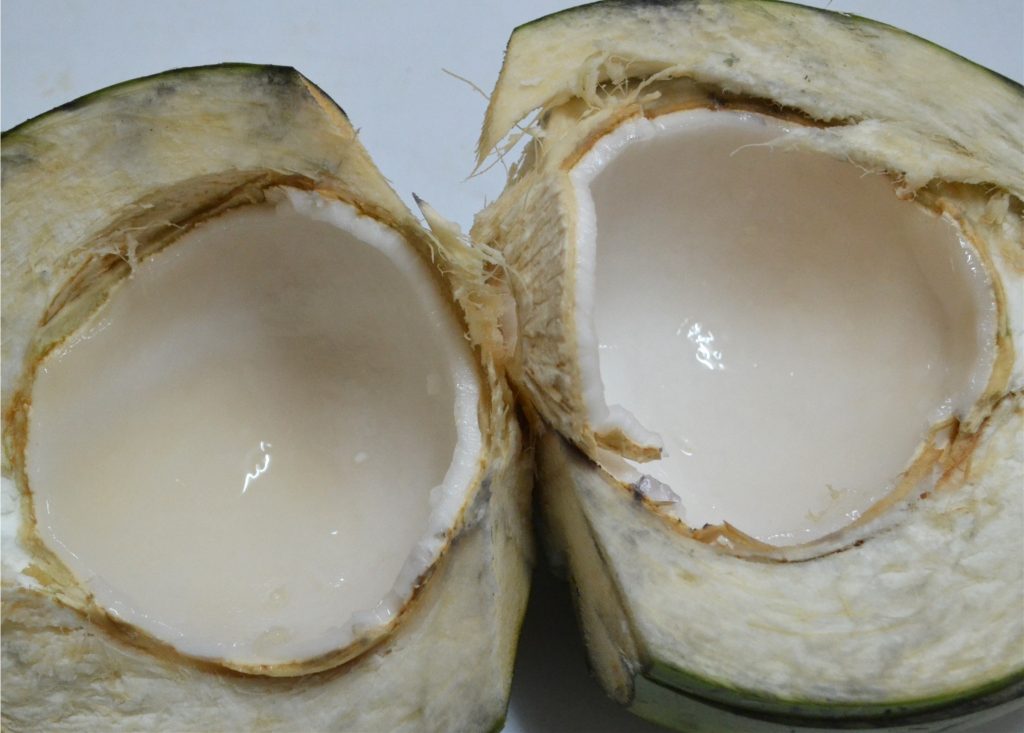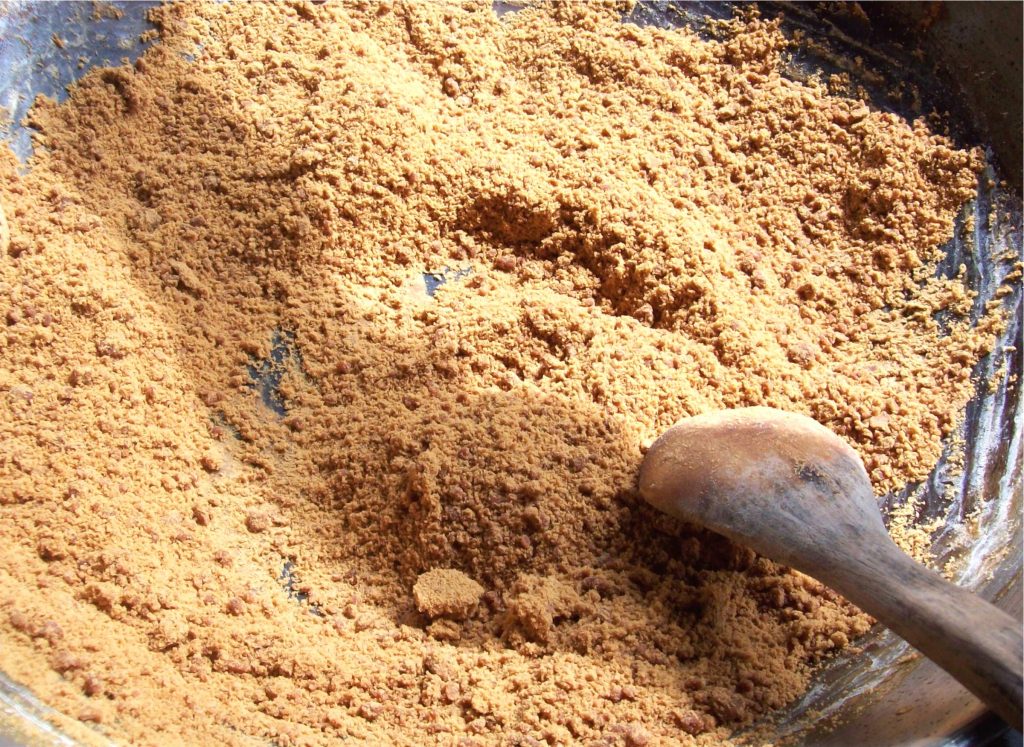
Coconut is known as the “tree of life.” And it’s not called as such for nothing.
“The amazing thing about the coconut palm is that it provides almost all the necessities of life: food, drink, oil, medicine, fiber, timber, thatch, mats, fuel, and domestic utensils, as well as serving important environmental services such as soil erosion control in coastal regions, wind protection and shade for other crops,” wrote Craig Elevitch, author of various books on tropical agriculture.
In the Philippines, coconut is one of the major pillars of the agriculture industry. The Philippine Statistics Authority said coconut products contributed 43% in the agro-based revenue of the country in 2017 with a total of US$1.8 billion export value.
Copra or dried coconut meat is the main products of coconut. It has high oil content, as much as 64%. Coconut oil, which is the most readily digested among all fats of general use in the entire world, furnishes about 9,500 calories of energy per kilo. Its chief competitors are soya bean oil, palm oil, and palm kernel oil.
But due to the collapse of world vegetable oil prices, the farm-gate price of copra also sank – fluctuating between P13 and P15 per kilogram – thus creating an oversupply of copra all over the country. Filipino farmers these days complained of very little income derive from their coconuts.
Now is the time for coconut farmers in the country to think of other uses than copra. “It is not enough that we plant the most number of trees or produce the highest number of nuts,” the Laguna-based Philippine Council for Agriculture, Aquatic and Natural Resources Research and Development (PCAARRD) pointed out. “It is getting the highest value and benefits from this crop that matters most. The best way to do this is to transform the nuts and other coconuts parts into high-value products.”
The PCAARD, a line agency of the Department of Science and Technology (DOST) teamed up with the Philippine Coconut Authority (PCA) of the Department of Agriculture (DA) to come up with a compendium of Commercially-Viable Coconut Technologies.
Let’s take a closer look at some of these technologies which farmers can adapt and/or adopt:
Coco sugar
“The production of sugar, a high-value product from coconut sap/toddy, paved the way for alternative livelihood for the coconut growers particularly in the rural areas of the country,” wrote Oscar G. Garin, former PCA administrator, in his introduction to Profitability Analysis: Coconut Sap Sugar Production Module, also published by PCAARRD.
“The coconut sap sugar is an emerging high-value product that captured the functional food market,” Garin continued. “It is known as a natural sweetener for diabetics due to its low Glycemic Index (GI) at 35, which is far from the 54 GI considered by nutritionists to be good for sugar-starved people. The phenomenal demand for this product has made a significant impact in the marketplace as well as in the livelihood of coconut farmers in the rural areas.”
Currently, coco sugar is exported to the United States, Japan, and the Middle East. It is already available in Indonesia and Thailand but they are used primarily as confectionery sugar for making sweets and desserts.
Interest in the product by health enthusiasts and diabetics around the world is growing. The International Diabetes Federation projects that by 2030, the number of people with diabetes will double the number of the 194 million people reported in 2003.

Health experts claim that about 50% of people worldwide have diabetes but are unaware of it while 85% of them have Type 2 diabetes (which is attributed to bad eating habits and lack of physical activities. According to WebMd.com, this type of diabetes reportedly develops if the body does not respond properly to insulin, which makes it difficult for the cells to get sugar from the blood to convert into energy or if the pancreas does not make enough insulin.
Right now, the Philippines ranks 10 among the countries with the highest incidences of diabetes in the world. In 2000, about 2.7 Filipinos were diabetics. The Geneva-based World Health Organization (WHO) predicts that by 2030, the number of diabetics in the country will surge to 7.7 million.
Studies have shown the inflorescence of coconut trees in good stand can yield an average of 2 liters of sap per tree per day. In addition, an average of 1 kilogram of sugar can be produced from 4 coconut trees per day.
Coco sugar, as it is now called, is rich in phosphorus, potassium, calcium, and chlorine. As an “invert sugar,” it also can be a valuable sweetener in food and pharmaceutical preparations and can be used as substitute for honey and sweetener for infant foods.
Coconut water
An American health magazine hails coco water as “America’s healthiest beverage” for providing enhanced hydration, essential nutrition and all five essential electrolytes (calcium, potassium, magnesium, phosphorous and sodium).
When compared with a popular sports drink per 100 milligrams, coco water has more potassium (294 milligrams versus 11.7 milligrams), less sodium (25 milligrams versus 41 milligrams), more chloride (118 milligrams versus 39 milligrams), more magnesium (10 milligrams versus 7 milligrams), and less sugars (five milligrams versus six milligrams).
“Fresh coconut water is already highly valued in tropical countries,” Morton Satin, Chief of AG’s Agricultural Industries and Post-harvest Management Service Satin said. “A young coconut between six and nine months contains about 750 milliliters of water – really, its juice that eventually becomes the flesh.”
Satin regards coco water as “a natural isotonic beverage” that has “the same level of electrolytic balance as we have in our blood.” “It’s the fluid of life, so to speak,” he pointed out.
American nutritionist Jonny Bowden, author of The 150 Healthiest Foods on Earth, considers coco water to be a “perfectly good option” for people who want to stay hydrated. “It’s high in heart-healthy potassium, with most brands providing about 700 milligrams in an 11-ounce serving – that’s lots more than you get in a banana,” he wrote. “It also has only about 60 calories per 11-ounce serving.”
Diabetics can also benefit from drinking coconut water. The PCA shares this bit of information: “Potassium content of water is remarkably high at all nut ages. Together with sodium and phosphorus, potassium content also tends to increase with the ages of the coconut to peak at nine months. This characteristic of coconut water makes it a very good drinking water for diabetics. Diabetics waking from a coma recover quickly after drinking coconut water.”
There’s more to coco water than all these. Bruce Fife, considered the world’s leading expert on coconut and health, shared this anecdote in his book,Coconut Water for Health and Healing, on how coco water helped in treating cataract:
“We discovered this by accident while on a cruise ship (years ago). A few of us were on an island day trip and wanted to get off the beaten tourist’s path so we hired a bus and driver to take us to the opposite side of the island (only 10 of us on that big bus). A man and his wife were taking the cruise as a sort last hoorah before her scheduled cataract surgery, we later found out.
“Anyway, there was a beautiful beach with coconuts laying everywhere and we got thirsty, but there was no drinking water. So we decided to open up some coconut to quench our dry throats. We found a local with a big machete and through sign language we convinced him to open coconuts for us. The woman with the cataracts got splashed in one eye by the coconut juice, and it burned a bit.
“We were all digging through everything we had for something to relieve her eye ‘injury.’ All we came up with was one moist washcloth. Her husband wiped her eye and placed the washcloth over it. About 10 minutes later she announced we should head back to the ship. We did.
“The next morning at breakfast she said that her eye was much better and that she could see very well. We examined her eye closely and could not see any signs of the cataract, which was quite obvious the day before. She said she wished she had gotten splashed in both eyes. Then the idea dawned on us to ‘splash’ her other eye.

“We did that very day as soon as we got ashore and also repeated the other eye too. This time we were prepared. We went to the local market, grabbed a coconut, opened it, and strained it through a washcloth into a plastic cup, dribbled the juice into both eyes, placed a warm washcloth over both eyes, waited 10 minutes, and the rest is history.”
No more cataracts and there was no surgery done. “Coconut water contains antioxidants as well as magnesium, potassium and other minerals and enzymes which may un-denature or relax the lens proteins, allowing them to realign and become transparent again,” Fife wrote.
Meanwhile, PCAARRD sees coconut water as a natural contender in the sports drink market. “Coconut water contains enough vitamin C to meet the daily requirements of the body,” it explains. “Further, it keeps the body cool thus, helps maintains the human body’s natural fluid levels while carrying vital nutrients and oxygen to cells. It improves calcium and magnesium absorption which supports the development of strong bones and teeth. It also improves insulin secretion and utilization of blood glucose.” (To be concluded)






